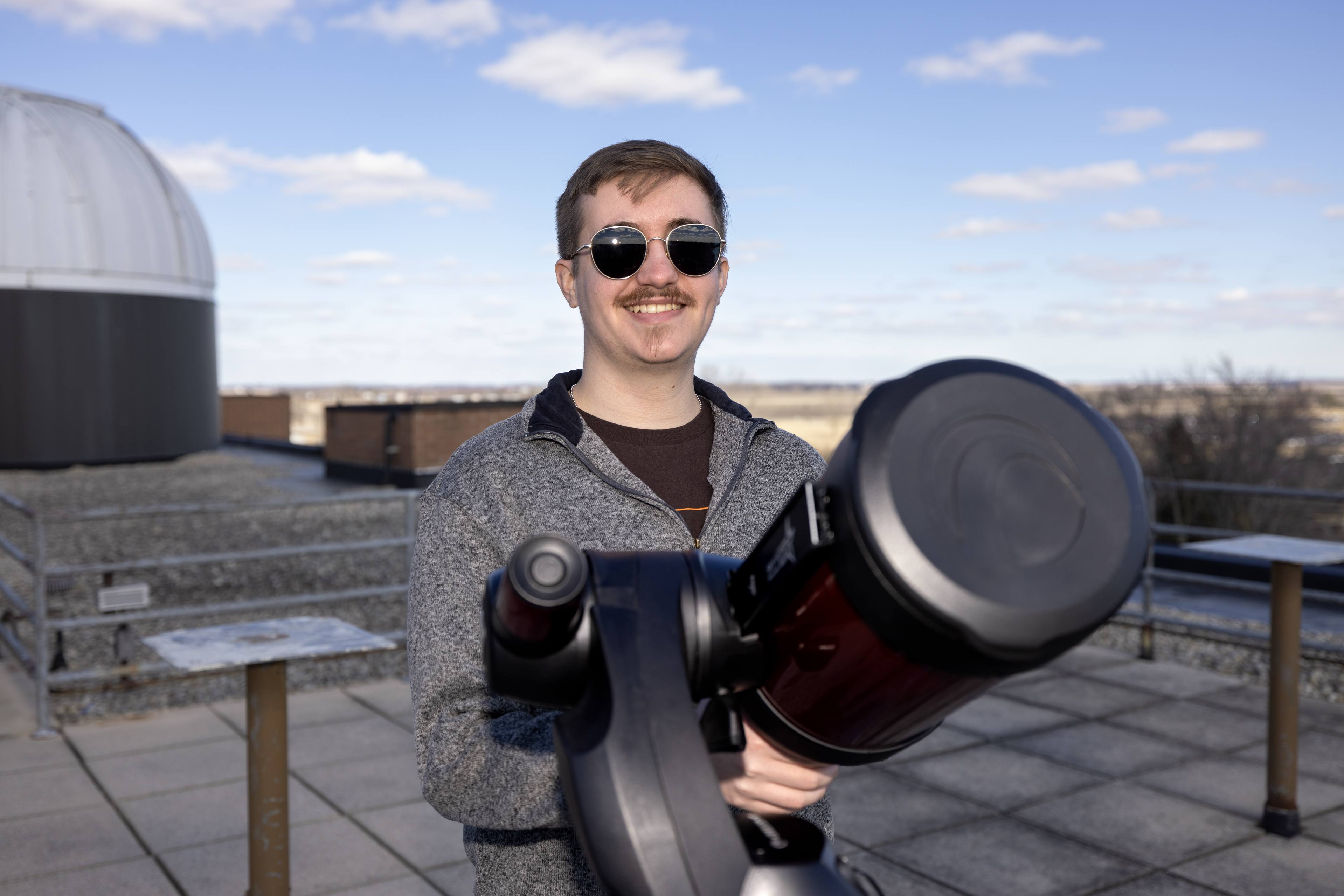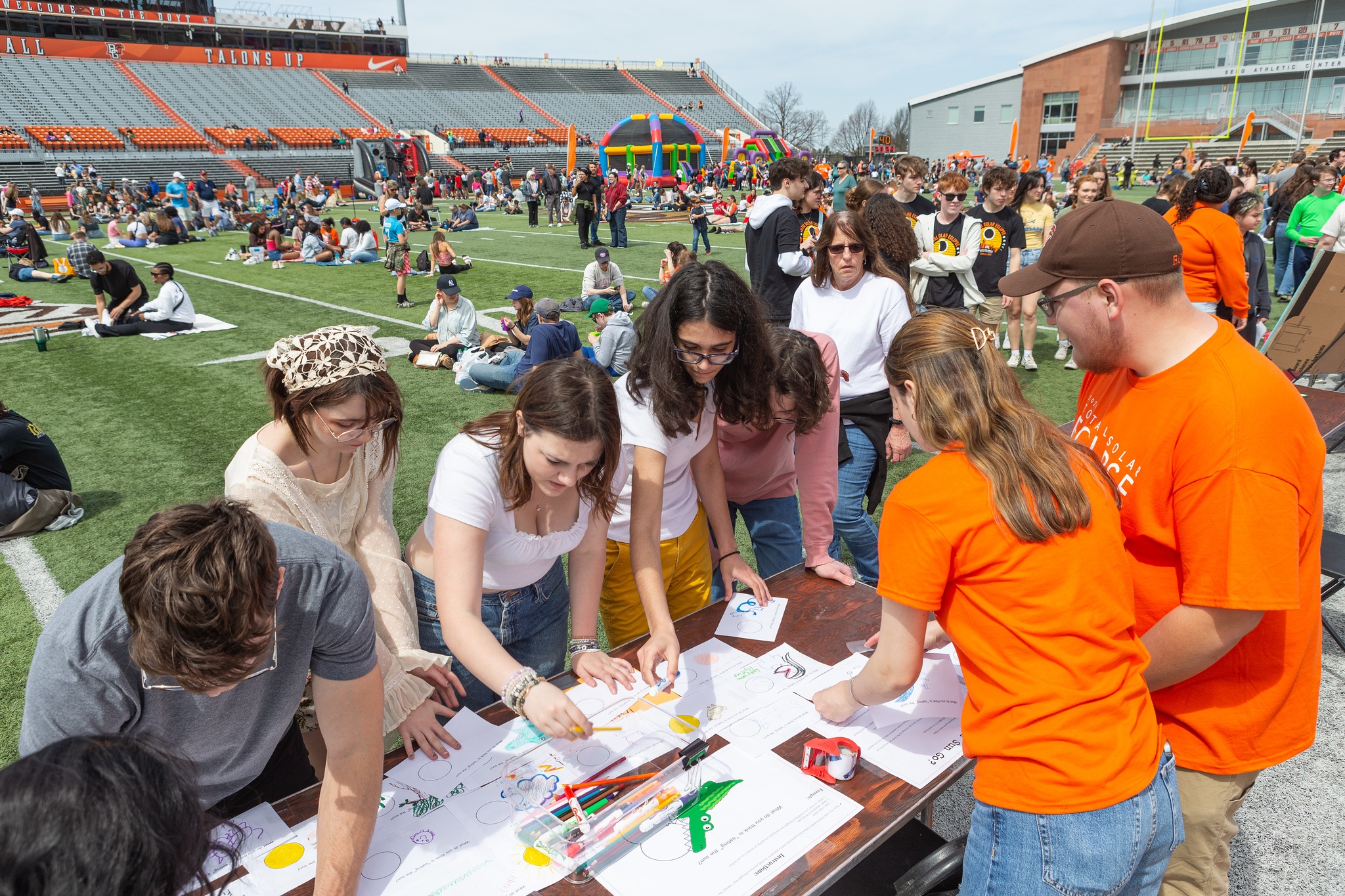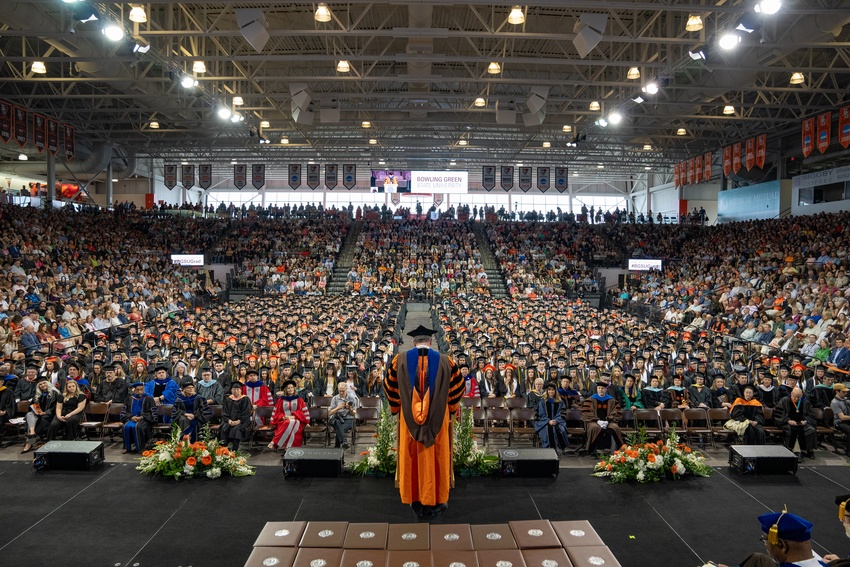
BGSU students put total solar eclipse in focus through experiential, semester-long course
Estimated Reading Time:
Students learn about eclipses from experts in a variety of fields through the course, which also prepared them to be eclipse outreach ambassadors
By Nick Piotrowicz
In the year prior to the April 8 solar eclipse, two Bowling Green State University faculty members devised a way to make the lead-up to the event — during which Bowling Green was in the path of totality — an entire class.
For one semester, the eclipse became part of the academic journey for current students who helped make the Great American Eclipse at BGSU a smashing success.
BGSU Physics and Astronomy Department chair Dr. Andrew Layden and teaching professor Dr. Kate Dellenbusch conceptualized special sections of ASTR 2700 and ASTR 3000, during which students learned about eclipses from a multidisciplinary perspective, heard from experts in a variety of fields and became eclipse ambassadors who added to the experience of viewing the eclipse on the Bowling Green campus.
While a total solar eclipse is often framed in purely astronomical terms, Layden and Dellenbusch knew students could benefit from an enjoyable, wide-ranging class that examined eclipses from several different perspectives.
“I think Kate and I were looking to engage students with a course that would be fun and interdisciplinary around the eclipse,” Layden said. “We focused a lot on the history, the music and the art of eclipses, but we also recognized we needed trained help on eclipse day, so this was a way of doing both things at once.”
For students interested in astronomy, the course presented the chance to experience a major astronomical event in real-time from multiple angles, whether it was learning about the cultural aspects of eclipses or helping plan for the outreach surrounding an event with thousands of visitors.
“The class gave them a chance to dive a little bit deeper into eclipses and some of the other topics that interest them,” Dellenbusch said. “They got a really hands-on experience with activities and outreach related to the eclipse.”
In addition to taking the class, students participated in eclipse day by assisting guests, answering questions, passing out eclipse glasses, presenting activities and documenting the landmark event from various points on campus.
More than 20 students conceptualized and presented historical, scientific and cultural activities at Doyt L. Perry Stadium, offering guests the chance to participate before viewing the eclipse.

For astronomy major Devin Darr, eclipse day presented a chance to gain real-world experience in his field. On eclipse day, Darr was atop the Physical Sciences Building on campus to capture moon transit pictures with a half-meter telescope as the moon completely blocked out the sun over Bowling Green.
“I plan on going into observational astronomy research, in particular exoplanet research at a national observatory, so I wanted to get more experience with a lot of the astronomy equipment BGSU offers here on campus,” said Darr, who helped shape and frame his career ambition through the University's Life Design program. “It definitely gave me the chance to be more hands-on with some of the equipment I would be using in the field.”
Related Stories
Media Contact | Michael Bratton | mbratto@bgsu.edu | 419-372-6349
Updated: 04/12/2024 02:04PM




